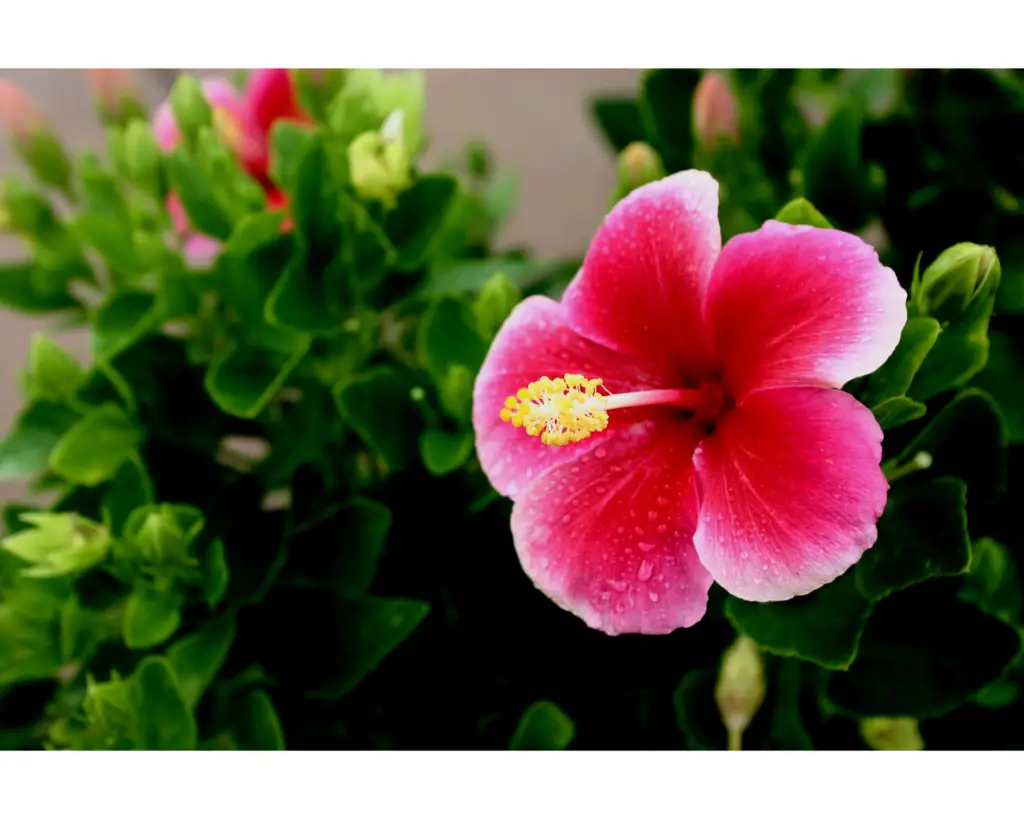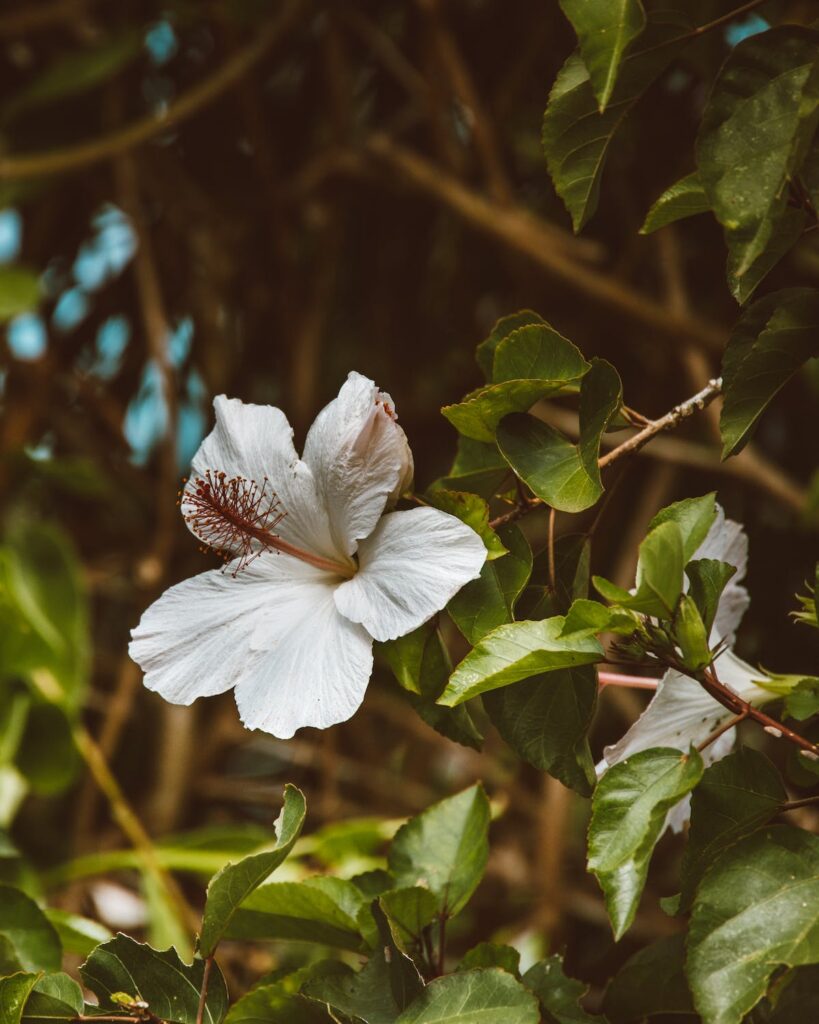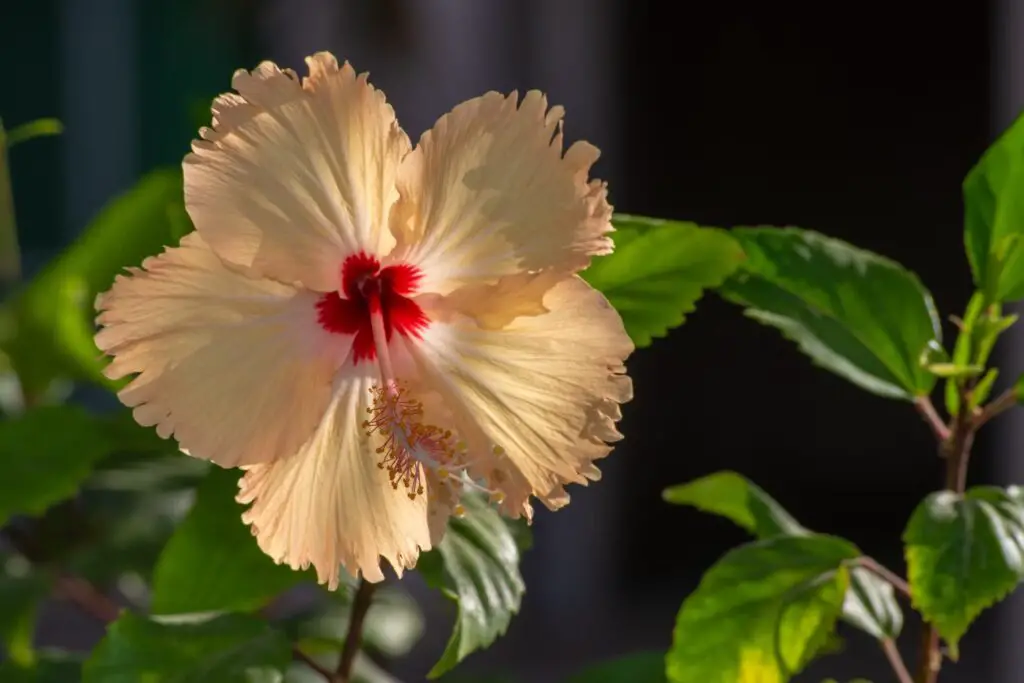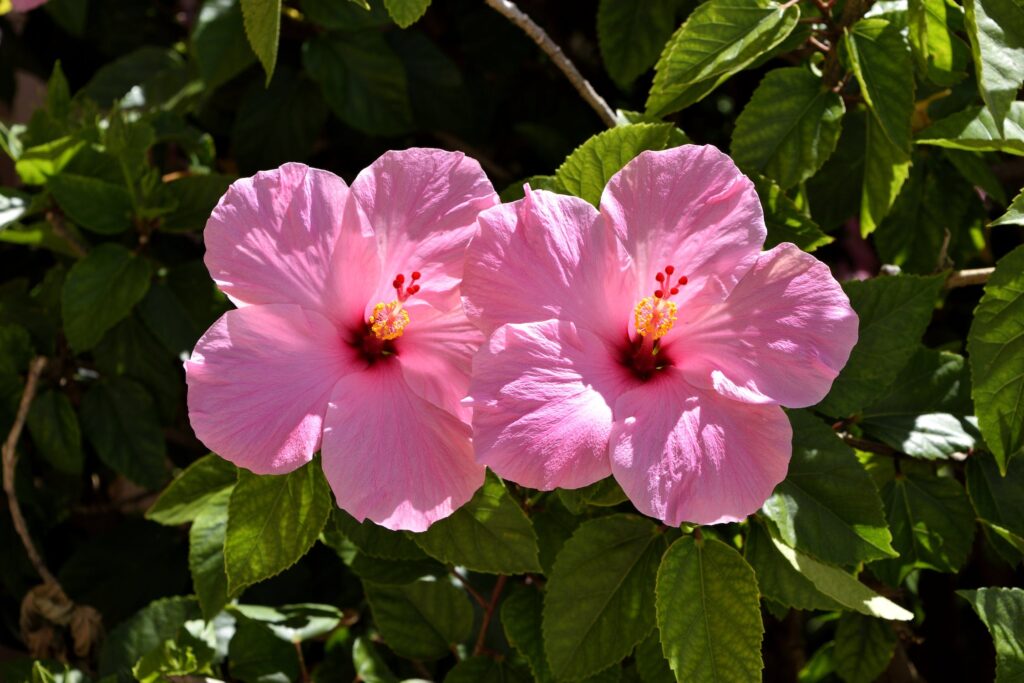Hibiscus trees are a popular outdoor plant known for their bright, showy flowers. However, many people may not realise that these trees can also thrive as indoor plants. With the right care, hibiscus trees can make a beautiful and unique addition to any home or office.
Table of Contents
Choosing a Hibiscus Tree for Indoors
When selecting a hibiscus tree to grow indoors, it’s important to choose a variety that is well-suited for indoor growing. While many hibiscus varieties can adapt to indoor environments, some are better suited than others. Look for a variety that is known for its compact growth habit and smaller size, such as the Chinese hibiscus or the dwarf hibiscus.
Additionally, it’s important to choose a healthy plant when purchasing a hibiscus tree for indoor growing. Look for a plant with lush green foliage and no signs of damage or disease. Check the soil to ensure it is moist but not waterlogged, and that the plant is not root-bound in its pot.


Light Requirements for Indoor Hibiscus Trees
One of the most important factors to consider when growing a hibiscus tree indoors is lighting. These plants require bright, direct sunlight in order to thrive. If you don’t have access to a sunny windowsill, you may need to supplement with artificial lighting.
Place your hibiscus tree in a south-facing window if possible, as this will provide the most direct sunlight. Alternatively, you can use grow lights to provide your plant with the necessary light. If using grow lights, place them about 6 inches (15 centimetres) above the plant and keep them on for at least 12 hours per day.
Watering and Soil Requirements
Hibiscus trees require regular watering in order to stay healthy. However, it’s important not to overwater, as this can lead to root rot and other issues. Water your hibiscus tree when the top inch of soil feels dry to the touch. Use a well-draining potting mix and a pot with drainage holes to prevent water from collecting in the soil.
In addition to regular watering, hibiscus trees benefit from occasional misting. This can help to increase humidity levels around the plant, which is important for optimal growth and flower production.
Temperature and Humidity Considerations
Hibiscus trees are tropical plants and prefer warm, humid conditions. In order to thrive indoors, it’s important to maintain a temperature of at least 60°F (15°C). In addition, hibiscus trees benefit from higher humidity levels than are typically found indoors. To increase humidity levels around your plant, you can use a humidifier or place a tray of water near the plant. Avoid placing your hibiscus tree near air conditioning vents or other sources of cold, dry air.
Fertilising Your Hibiscus Tree
Regular fertilisation is important for promoting healthy growth and flower production in hibiscus trees. Use a balanced, water-soluble fertiliser every two weeks during the growing season (spring and summer), and reduce fertilisation to once per month during the fall (autumn) and winter months. Be sure to follow the instructions on the fertiliser package and avoid over-fertilisation, as this can lead to burning and other issues.
Pruning and Maintenance
Regular pruning is important for maintaining the shape and health of your hibiscus tree. Prune your plant in the spring before new growth begins, removing any dead or damaged branches and shaping the plant as desired. Additionally, hibiscus trees benefit from regular pinching, which involves removing the tips of new growth to encourage bushier growth and more flowers.
Pests and Diseases
Indoor hibiscus plants are susceptible to a variety of pests and diseases. Common pests include aphids, spider mites, and mealybugs, which can be controlled with insecticidal soap or neem oil. Diseases that may affect indoor hibiscus plants include leaf spot and root rot, which can be prevented by avoiding overwatering and ensuring proper drainage. Regularly inspecting your plant and promptly addressing any issues can help keep your indoor hibiscus healthy and thriving.
Repotting an indoor hibiscus plant
Repotting an indoor hibiscus plant is an important step in ensuring its health and continued growth. The best time to repot your hibiscus tree is in the spring, when it is entering its active growing phase. Choose a pot that is one size larger than its current container and use a well-draining potting mix. Gently remove the plant from its old pot, being careful not to damage the roots, and place it in the new container. Fill in any gaps with fresh potting mix and water thoroughly. After repotting, avoid fertilising your hibiscus for a few weeks to allow it to adjust to its new environment.
Pollination
Indoor hibiscus plants can be pollinated manually or naturally by bees and other insects. To manually pollinate your hibiscus plant, use a small brush to gently transfer pollen from the stamen (male part of the flower) to the stigma (female part of the flower) of each bloom. You can also gently shake the flower to release pollen. If you notice that your hibiscus plant is not producing fruit or flowers, it may be due to a lack of pollination. In this case, manually pollinating your plant can help promote flower production and increase the chances of fruit development.


Conclusion
Hibiscus trees can make beautiful and rewarding indoor plants. They offer a burst of colour and fragrance to any indoor space and can even produce edible fruit. While hibiscus trees require some care and attention, such as proper watering, fertilisation, and pest control, their stunning blooms and lush foliage make them a worthwhile addition to any plant collection. With the right conditions and care, your indoor hibiscus tree can thrive for years to come.
